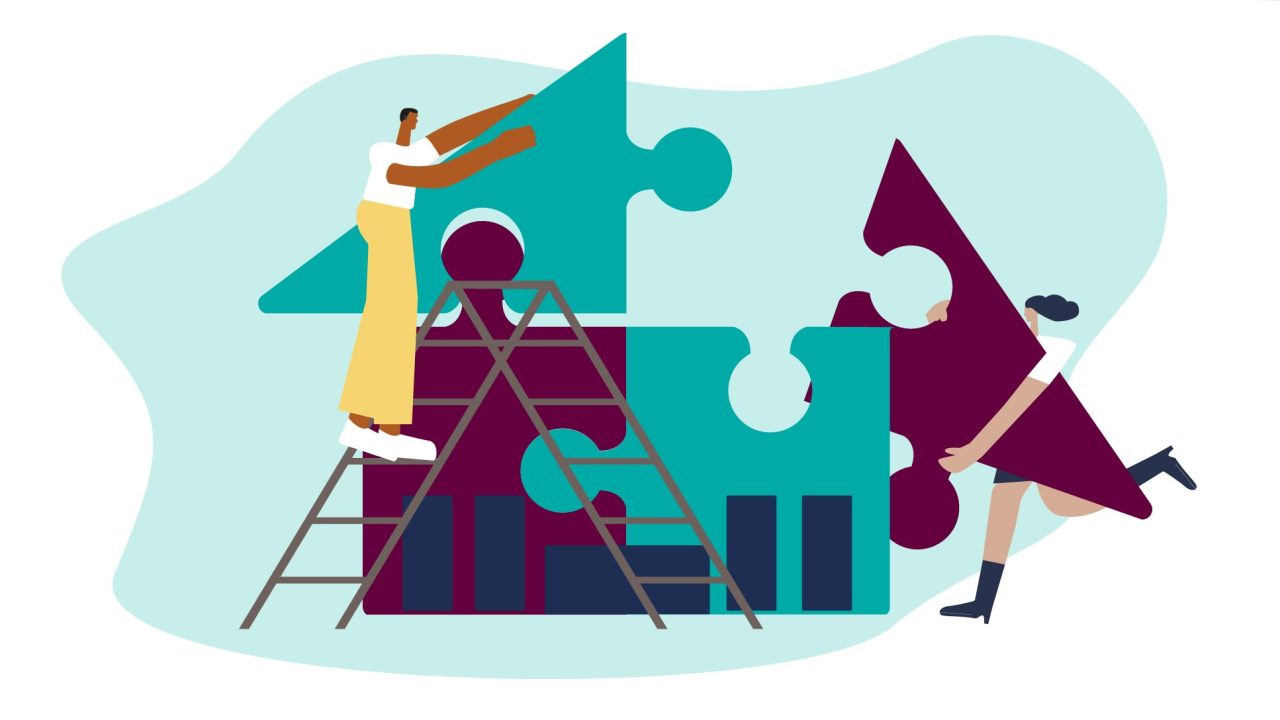
This visual Data Story is based on findings from the 2023 Annual Survey of Museum-Goers, a national survey of American museum visitors from AAM and Wilkening Consulting. Every year, the survey partners with individual museums to research their audiences and yield insights about their behaviors and preferences, both on an institutional and national level. Interested in joining the 2024 edition on the themes of repeat visitation, imagination, and hope for the future? Sign up by February 28, 2024, for a special early bird rate.

“Inflation problems, violence and bad weather make visiting museums out of the city of residence more difficult. Costs are greater and safety is not ensured.”
We all know that the COVID-19 pandemic devastated museum attendance. Many museums have not yet recovered to pre-pandemic attendance levels.
But there are other external pressures that can also have a significant effect on visitation. Let’s explore what they are, and who they affect the most.
In the 2023 Annual Survey of Museum Goers, as well as in a broader population sample of U.S. adults, we asked respondents to share with us what factors have negatively affected leisure time activities and travel plans in the past few years. They could choose all that apply.
- Extreme weather (including heat, storms, wildfires/smoke/flooding, etc.)
- 23 percent of frequent museum-goers
- 31 percent of U.S. adults
- COVID-19 or other public health concerns
- 77 percent of frequent museum-goers
- 48 percent of U.S. adults
- Violence/crime concerns
- 21 percent of frequent museum-goers
- 27 percent of U.S. adults
- Inflation
- 44 percent of frequent museum-goers
- 54 percent of U.S. adults
- None of these
- 8 percent of frequent museum-goers
- 18 percent of U.S. adults
For this Data Story, we are setting aside the COVID-19/public health response, and are focusing on the other negative factors we assessed.
Extreme Weather
No question, the climate is changing and weather is becoming more extreme. Much of the continental U.S. has suffered high heat and smoky conditions this past summer. Severe storms and flooding are increasing.
On a day-to-day basis, this affects the choices we make, such as whether outdoor or indoor activities are more suitable or even what vacation destinations we choose.
Nearly a quarter of frequent museum-goers have connected the dots that increasingly extreme weather is negatively affecting their leisure time; a slightly higher percentage of U.S. adults from the broader population agree.
But who were these respondents? They had two main identifying traits:
- Political values. They were about 20% more likely to identify as “liberal” than the overall sample (and about 40% less likely to identify as “conservative”).
- Geography. They were much more likely to be from the West Coast or Colorado (wildfires/ smoke) or from Buffalo (December 2022 snowstorm). Interestingly, hurricane-ravaged Floridians were significantly LESS likely to choose extreme weather.
Keep in mind, our surveys were in the field in the winter of 2023. Given what the weather had been like the previous year, it isn’t a surprise that the geographical spikes occurred as severe weather was more localized. Also, summer storms and heat were a distant memory.
Would 2024 show an increase, given that severe weather was more widespread in the summer of 2023? Or will memories fade again? We don’t know.
At this point, however, we are seeing this as an initial baseline for future comparison. As the climate becomes ever more erratic and extreme, we expect this percentage to increase as more of us experience challenging environmental conditions.
Violence and Crime
“Street crime and violence in Chicago makes us less likely to go there.”
For about one in five museum-goers, violence and crime is a concern, and the response among the broader population of U.S. adults was slightly higher.
For these respondents, if a museum is located in a place they perceive as high-risk, they are less likely to visit. And indeed, over 40% of the crime-averse reported they are visiting museums less now than they were before the pandemic. While perceptions about violence and crime are not solely responsible for this pull-back, it could be a contributing factor.
Who is most likely to be concerned about violence and crime? There were three main traits:
- Political values. This was the most significant trait; they were about 40% more likely to be conservative (and about 20% less likely to be liberal).
- Geography. Overall, this played a smaller role than political values, but some urban museums (such as in Chicago or New Orleans) seem to be more challenged by this issue than other (especially rural) museums.
- Race and LGBTQ+ identity. While this also played a smaller role, we don’t want to dismiss these concerns. In particular, Asian or Asian American and members of the LGBTQ+ community were slightly more likely to express concerns about violence and crime than other respondents.
Inflation
Inflation, however, was a more widespread concern than weather or crime. In fact, more U.S. adults from the broader population said inflation had negatively affected their leisure time than the COVID-19 pandemic.
Who is most concerned about inflation?
Young adults. No question. They were 50% more likely to cite inflation as a challenge than other respondents.
In fact, adults 70 and older were the least likely to say inflation was a concern, somewhat puncturing the myth of the fixed-income senior (after all, Social Security sees yearly cost-of-living adjustments).
So, if a museum wants to attract audiences that are watching their household budgets, what are the best tactics? To find out, we asked inflation-concerned respondents how their museum-going has been affected by inflation.
First, let’s see what frequent museum-goers said. While a third said they were visiting museums less often, only 3% said they had stopped visiting museums entirely.
About half of respondents said coupons, discount passes, and free/reduced admission days were their favorite tactics to save money.
There were also shifting tactics based on life stage:
- Young adults (under 40) without children. These respondents were the most likely to say they were looking for coupons, discount passes, or free/reduced admission days. They were the least likely to look to membership to save money.
- Families with young children. Because these visitors are much more likely to be repeat visitors to specific museums, they are also more likely to see membership as an inflation-busting tactic.
- And for older adults…well, even when they are concerned about inflation, they are less likely to be cutting back on museums. They are more likely to say they are cutting back on overnight trips, and instead visiting local museums and taking day-trips.
Similarly, casual and sporadic museum-goers from the broader population of U.S. adults were also looking for coupons, discount passes, and free/reduced admission days. But nearly half of these inflation-concerned respondents said they were visiting museums less often, and nearly a quarter said they had stopped visiting museums entirely.
As we look into 2024 and beyond, these external pressures on museum attendance will likely continue. Museums will need to adapt to these constraints.
Some thoughts include:
- Can museums, especially those that are currently reliant on tourists, do more to attract local audiences?
- Can museums be safe havens to escape our turbulent world? If so, what does this look like? And how do we balance it with presenting more challenging content that we all need to learn from as well?
- How can we more effectively position ourselves as high-value destinations that stay a priority even when budgets are tight?
“I think post-Covid has made me more appreciative of the beautiful things in life, such as art, music, nature, etc., so it makes sense that I would enjoy the museum more often post-Covid. I am doing less of going out on the town, but spending more time at home and seeing people less than pre-Covid, so I find myself making plans less often, but somehow have managed to attend the museum more often than before the pandemic.”
Annual Survey of Museum-Goers Data Stories are created by Wilkening Consulting on behalf of the American Alliance of Museums. Sources include:
- 2023 Annual Survey of Museum-Goers, n = 107,187; 228 museums participating
- 2023 Broader Population Sampling, n = 2,002
- 2017 – 2022 Annual Surveys of Museum-Goers
*Data Stories share research about both frequent museum-goers (typically visit multiple museums each year) and the broader population (including casual and non-visitors to museums). See the Purpose and Methodology (Update) Data Story from September 12, 2023 for more information on methodology.
More Data Stories can be found at wilkeningconsulting.com/data-stories.
[inset-related-content]









Hello, these results are very interesting and helpful in my field of work. I would be interested in seeing the full report including demographic breakdowns. Would this be possible?